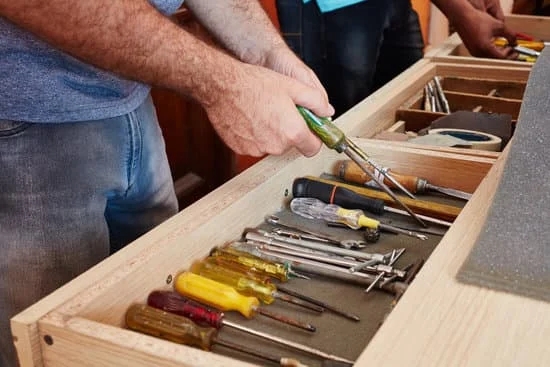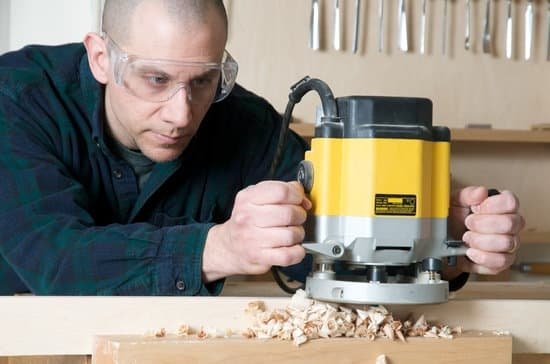Woodworking vise dogs are essential tools in the woodworking industry, used to secure workpieces in place while they are being worked on. These handy devices can be attached to a workbench or other surfaces, providing stability and support during various woodworking tasks. A woodworking vise dog essentially acts as an extra pair of hands, holding pieces firmly in place to prevent any movement or slipping while cutting, shaping, or assembling.
The history of woodworking vise dogs dates back centuries, with various designs and materials used throughout the years. Originally crafted from wood, these tools have undergone significant evolution to match modern-day needs and technologies. Today, there are different types of woodworking vise dogs available on the market, such as quick-release models for added convenience and traditional options for those who prefer a more classic approach.
When choosing the right woodworking vise dog for your project, several factors come into play. Consider the size of your workpieces, the type of work you will be doing, and your personal preferences when selecting a vise dog.
It’s important to choose a tool that will provide adequate grip and stability for your specific woodworking tasks. In the following sections, we will explore the different types of woodworking vise dogs available, how to properly install and maintain them, as well as tips and tricks for maximizing their use in your projects.
History of Woodworking Vise Dogs
The history of woodworking vise dogs dates back centuries, with evidence of their use in various forms across different cultures and time periods. The early iterations of vise dogs were simple wooden pegs or wedges used to secure workpieces in place while they were being worked on. These rudimentary devices served the basic purpose of holding the wood steady, allowing craftsmen to focus on their intricate woodworking tasks.
As woodworking techniques and tools advanced over time, so did the design and function of vise dogs. In the 18th and 19th centuries, more elaborate versions of vise dogs were developed, incorporating sturdy metal components that provided greater stability and clamping force.
This allowed woodworkers to tackle more complex projects with precision and efficiency. The evolution of vise dogs mirrored the advancements in woodworking as a whole, with innovations such as quick-release mechanisms and adjustable features becoming commonplace in modern designs.
One key aspect of the evolution of woodworking vise dogs is the shift towards customization and versatility. Modern woodworking vise dogs come in a variety of shapes, sizes, and materials to cater to different project requirements.
Whether you prefer a traditional wooden vise dog for its aesthetic appeal or a quick-release metal one for its convenience, there is a wide range of options available to suit every woodworker’s needs. The adaptability and diversity of vise dog designs today are a testament to how far this essential tool has come since its humble beginnings.
| Evolution | Key Features |
|---|---|
| 18th-19th Centuries | Metal components for stability |
| Modern Designs | Quick-release mechanisms for convenience |
Types of Woodworking Vise Dogs
Woodworking vise dogs come in various types, each designed to cater to different needs and preferences of woodworkers. Understanding the different types available can help you choose the right one for your projects. Here are some common types of woodworking vise dogs:
- Traditional woodworking vise dogs: These are the classic style vise dogs that require a bit more effort to adjust and secure your workpiece. They are typically made of durable materials like cast iron or steel, providing strength and stability when working on your projects.
- Quick-release woodworking vise dogs: These modern vise dogs feature a quick-release mechanism that allows for easy and efficient adjustments. With just a simple lever or knob, you can quickly secure or release your workpiece, saving time and hassle during woodworking tasks. Quick-release vise dogs are ideal for those who prioritize convenience and efficiency in their woodworking projects.
- Material differences: Woodworking vise dogs can be made from a variety of materials, including metal, plastic, or wood. Metal vise dogs offer durability and strength, making them suitable for heavy-duty projects. Plastic vise dogs are lightweight and affordable but may not provide the same level of stability as metal ones. Wooden vise dogs give a traditional look and feel to your workspace but may require more frequent maintenance to prevent wear and tear.
When choosing the right woodworking vise dog for your project, consider factors such as the type of workpieces you will be handling, the level of precision required, and your personal preferences in terms of ease of use and maintenance. Whether you opt for a traditional cast iron vise dog or a modern quick-release model, make sure to select one that aligns with your specific woodworking needs.
Remember that investing in a high-quality woodworking vise dog is essential for achieving accurate results in your projects. Take the time to research different types of vise dogs available on the market, read reviews from other woodworkers, and test out various models before making a decision. By choosing the right woodworking vise dog for your needs, you can enhance both the efficiency and precision of your woodworking endeavors.
How to Choose the Right Woodworking Vise Dog for Your Project
When it comes to selecting the right woodworking vise dog for your project, there are several factors to consider in order to ensure that you have the right tool for the job. One of the first things to think about is the size and weight capacity of the vise dog. Different projects may require different sizes and weight capacities, so it’s important to choose one that can securely hold the materials you will be working with.
Another important factor to consider when choosing a woodworking vise dog is the type of material it is made from. Traditional woodworking vise dogs are typically made from durable materials like cast iron or steel, while newer quick-release models may be made from a combination of metal and plastic components. Depending on your budget and preferences, you may want to opt for a more traditional or modern design.
In addition to size, weight capacity, and material, you should also consider any special features or accessories that come with the woodworking vise dog. Some models may have built-in clamps or swivel bases for added versatility, while others may come with replaceable jaws or additional padding for delicate materials. By carefully evaluating these factors, you can choose a woodworking vise dog that is tailored to your specific needs and preferences, ensuring a successful and efficient woodworking experience.
Installation and Setup
Preparation
Before installing and using a woodworking vise dog, it is essential to ensure that your workbench is sturdy and able to support the pressure applied during woodworking tasks. Make sure that the vise dog is compatible with your workbench design and dimensions. Additionally, have all the necessary tools ready for installation, such as screws, a drill, and perhaps a hammer.
Installation Steps
- Begin by identifying the appropriate location on your workbench for mounting the woodworking vise dog. Choose an area that is easily accessible and provides enough space for your projects.
- Mark the positions where you will be attaching the vise dog onto the workbench. Use a pencil or chalk to make these markings clearly visible.
- Drill pilot holes at each marked position to ensure that the screws will go in smoothly without damaging the wood.
- Place the woodworking vise dog over the pilot holes and use screws to secure it in place. Make sure to tighten the screws adequately to prevent any wobbling during use.
Usage Guide
Once you have successfully installed your woodworking vise dog, it’s time to start utilizing its functionality. Position your workpiece between the jaws of the vise dog and adjust its grip according to your project requirements. Use a handle or crank (depending on the type of vise dog you have) to tighten or release the jaws securely around your material.
Remember to always double-check that your workpiece is firmly held in place before starting any cutting, drilling, or shaping actions. Properly securing your material with a woodworking vise dog not only ensures safety but also enhances precision in your woodworking tasks. With practice, you’ll soon discover how invaluable this tool can be in improving efficiency and accuracy in your woodworking projects.
Tips and Tricks for Maximizing the Use of a Woodworking Vise Dog
Woodworking vise dogs are essential tools in a woodworker’s arsenal, providing stability and support during various tasks. To maximize the use of a woodworking vise dog and ensure a smoother woodworking experience, there are several techniques and tips to keep in mind. One key technique is to adjust the height of the vise dog according to the thickness of the material being worked on. This ensures a secure grip and prevents any movement or slippage while working.
Another important tip is to use holdfasts in conjunction with woodworking vise dogs for added support. Holdfasts can be easily inserted into bench holes and clamped down to secure the workpiece firmly in place. This combination provides even more stability and allows for precise and controlled woodworking without any wobbling or shifting.
Additionally, when using a woodworking vise dog, it’s helpful to apply some wax or lubricant on the threads and moving parts of the vise to ensure smooth operation. This reduces friction and makes adjustments easier, ultimately enhancing your overall woodworking experience. By incorporating these tips and techniques into your workflow, you can make the most out of your woodworking vise dog and achieve professional results in your projects.
| Technique | Benefits |
|---|---|
| Adjusting height according to material thickness | Ensures secure grip and prevents slippage |
| Using holdfasts for added support | Provides extra stability for precise woodworking |
| Applying wax or lubricant on moving parts | Reduces friction for smooth operation |
Maintenance and Care
Woodworking vise dogs are essential tools in any woodworker’s shop, providing a sturdy grip to secure workpieces during various woodworking tasks. To ensure that your woodworking vise dog functions effectively for years to come, proper maintenance and care are crucial. By following some simple steps, you can keep your woodworking vise dog in top condition and extend its lifespan.
Here are some tips on how to maintain and care for your woodworking vise dog:
1. Clean Regularly: After each use, make sure to clean your woodworking vise dog to remove any sawdust, debris, or buildup that may affect its performance. Use a brush or compressed air to clean out any crevices and moving parts.
2. Lubrication: Periodically lubricate the moving parts of your woodworking vise dog with a light machine oil or wax to ensure smooth operation. This will prevent any rust or corrosion from affecting the functionality of the tool.
3. Check for Wear and Tear: Inspect your woodworking vise dog regularly for any signs of wear or damage. Check the alignment of the jaws, screws, and other components to make sure everything is in proper working order. Replace any worn-out parts as needed to maintain optimal performance.
By incorporating these maintenance practices into your routine, you can ensure that your woodworking vise dog remains a reliable tool in your workshop for years to come. Proper care will not only extend the life of your vise dog but also contribute to a more efficient and enjoyable woodworking experience overall.
Woodworking Projects That Benefit From Using a Woodworking Vise Dog
Woodworking vise dogs are an essential tool for any woodworker looking to improve their precision and efficiency in various projects. Whether you are a seasoned professional or a beginner enthusiast, incorporating a woodworking vise dog into your workshop can make a significant difference in the quality of your work. These tools are designed to securely hold pieces of wood in place while you work on them, allowing for more intricate and detailed woodworking tasks.
The history of woodworking vise dogs dates back centuries, with these tools evolving over time to meet the changing needs of craftsmen. From traditional wooden vise dogs to modern quick-release options made from durable materials like steel or aluminum, there is a wide range of choices available for woodworkers today. The key is to choose the right type of woodworking vise dog that suits your specific project requirements and preferences.
When selecting a woodworking vise dog for your next project, consider factors such as the size and weight capacity of the tool, as well as its compatibility with your workbench or workspace. Proper installation and setup are also crucial for getting the most out of your woodworking vise dog, so be sure to follow a step-by-step guide to ensure it is securely attached and ready for use.
With some practice and experimentation, you can discover various tips and tricks for maximizing the potential of your woodworking vise dog, leading to smoother and more efficient woodworking experiences.
Frequently Asked Questions
What Is a Dog Used for on a Woodworking Vise?
A dog on a woodworking vise is used to hold a workpiece securely in place while it is being worked on. It acts as a stopper or clamp that prevents the wood from moving during drilling, sawing, or planing.
Why Are They Called Dog Holes?
The term “dog holes” originated from the fact that these holes are designed to accommodate dogs – the metal pegs or clamps used in conjunction with bench vises. These dogs help secure the workpiece on the workbench, hence the name “dog holes”.
What Are Dog Holes for on a Workbench?
Dog holes on a workbench serve as anchor points for holding and securing various sizes of wood pieces while working on them. They allow for flexibility in clamping and positioning the workpiece at different angles or orientations to facilitate woodworking tasks effectively.

Hi everyone! I’m a woodworker and blogger, and this is my woodworking blog. In my blog, I share tips and tricks for woodworkers of all skill levels, as well as project ideas that you can try yourself.





